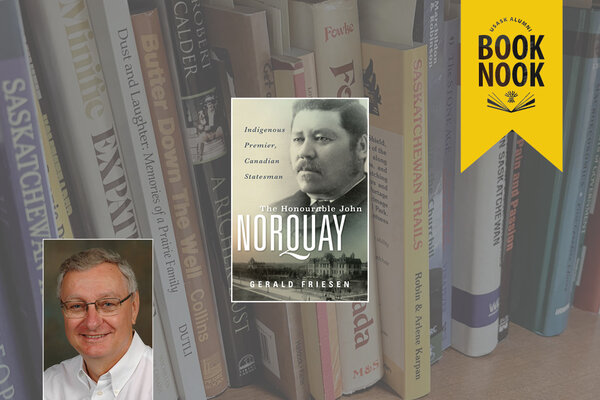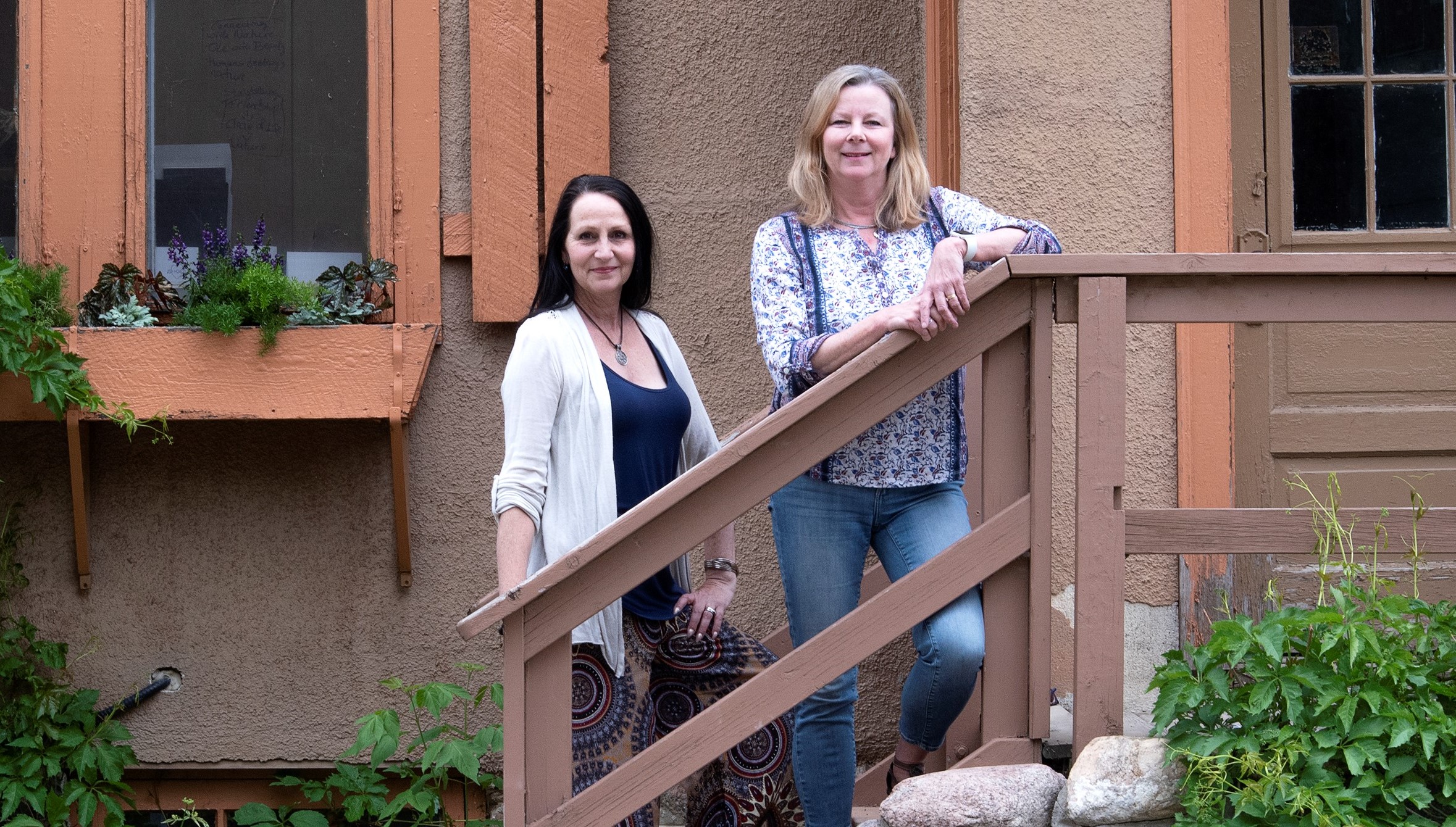
Two new USask graduates begin artistic residency at Saskatoon’s historic Bunkhouse
Cristine Andrew-Stuckel and Diana Roelens received their Bachelor of Fine Arts (honours) degrees after presenting their work during a BFA exhibition at the Gordon Snelgrove Gallery earlier this year
By Shannon Boklaschuk
Two University of Saskatchewan (USask) art graduates who received their degrees during 2021 Spring Convocation are now embarking on a new challenge—an eight-month residency at the historic Bunkhouse building, located at the Saskatoon Forestry Farm Park & Zoo.
Cristine Andrew-Stuckel and Diana Roelens both studied in the Department of Art and Art History in USask’s College of Arts and Science. They received their Bachelor of Fine Arts (honours) degrees after presenting their work during a BFA exhibition at the Gordon Snelgrove Gallery earlier this year. Now they are part of a group of artists-in-residence at the Bunkhouse, along with spoken word artist Peace Akintade, musician Micah Jane, visual artist Jane Reväe McWhirter and visual artist/filmmaker Ania Ślusarczyk.
Artists in Place: The Bunkhouse Project is an artist-in-residence program sponsored by the City of Saskatoon. The Bunkhouse, built in 1916, was renovated and reimagined as artist studio space, furthering one of the City’s goals of providing a platform for a Saskatoon civic facility to host artists and engage the community through public art projects. Andrew-Stuckel and Roelens applied for the residency as a visual artist team.
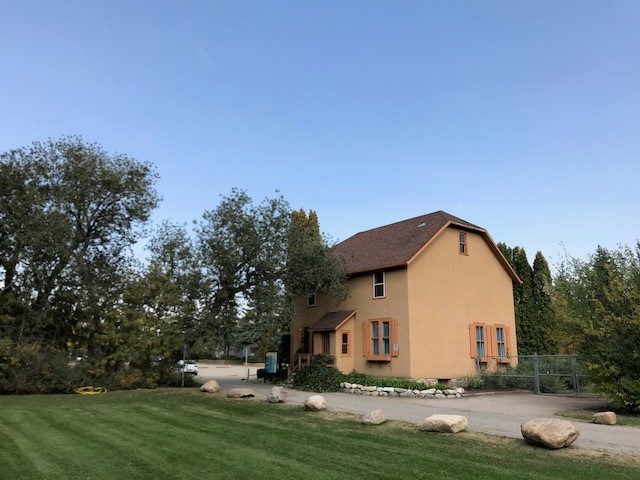
“Having access to a studio in this heritage building located in the Saskatoon Forestry Farm Park & Zoo for eight months in our home city is an ideal opportunity to develop our individual practices and to work as a collaborative team,” said Roelens. “We met in 2015 in a first-year painting class at the University of Saskatchewan, shared a studio in the Murray Building for several years and spent last summer doing some experimental collaborations using mixed mediums. Although our practices are very different, we have a common interest in aspects of the environment—and being able to work together is an opportunity to learn how to respond to one another’s work in creating a unique, cohesive body of work related to the Saskatoon Forestry Farm Park & Zoo.”
Andrew-Stuckel said she saw on advertisement for the residency on Facebook. After discussing it Roelens, they thought the opportunity would be a good fit for them.
“Because of COVID, there would not be as many artists accepted into the residency for this year, but we could apply as a team. The start date was May 1—it runs until Dec. 31—which would give us two weeks off after finishing classes,” Andrew-Stuckel said.
“We felt it would be a great way to continue with the momentum we had built, especially after having completed our BFA exhibitions at the beginning of April. It would also give us a focus. We had always planned to continue to work together once we finished our degrees, and we had been interested in producing some collaborative work. Last summer we began to experiment with that idea and created a series of drawings that we had both worked on. Our proposal for the residency was built on the premise of collaborative drawings, but with the intention of also producing individual work.”
Born in Nongoma, South Africa, Roelens immigrated to a small rural town on the Canadian prairies in 2004 with her husband and young family. She has since exhibited at group shows in South Africa and Saskatchewan and, in 2018, she was one of three USask students nominated to submit paintings to Fresh Paint/New Construction at the Art Mûr gallery in Montreal.
Roelens was pleased to receive her degree in studio art during USask’s 2021 Spring Convocation, following six years of part-time study.
“Receiving my degree is an honour and I am thankful to have had the opportunity to study at the University of Saskatchewan,” she said.
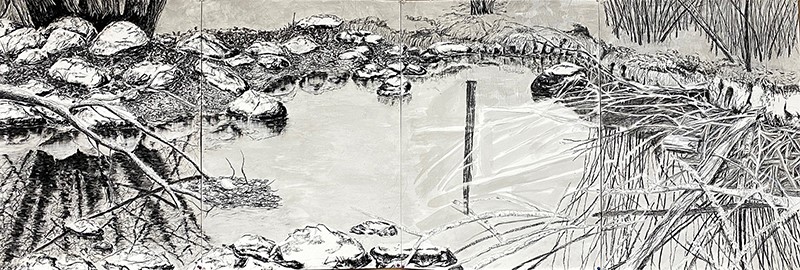.jpg)
Originally from the Ottawa Valley in Ontario, Andrew-Stuckel relocated to Saskatoon in 1999 with her young daughters. In 2015, she returned to university to pursue her lifelong love of art and went on to receive two awards during 2021 Spring Convocation: the Judy Poole Award in Art and Art History and the University of Saskatchewan Film Society Prize. While Andrew-Stuckel had hoped to be able to walk across the stage to receive her degree this year, due to the COVID-19 pandemic an in-person Convocation ceremony wasn’t possible.
“That said, I am very happy to have completed my degree and, overall, I have enjoyed the university experience,” said Andrew-Stuckel, who, like Roelens, was chosen to submit paintings to Fresh Paint/New Construction in 2018 and plans to pursue a master’s degree in the future.
Andrew-Stuckel said the new Bunkhouse residency opportunity provides her and Roelens with daily access to the park and the zoo. Andrew-Stuckel is interested in the importance of the park as a green space within the city—particularly after a USask class she took this past year, taught by Dr. Robert Patrick (PhD) from the Department of Geography and Planning, that focused on sustainable cities. Roelens, meanwhile, is documenting the Robin Smith Meditation Garden with a series of botanical studies. They are working toward an exhibition at the end of the year of large-scale drawings, complemented by smaller studies, that will enable viewers to be immersed in their experiences and interpretations of the park, ponds and gardens that make up the environment of the green space within the city.
“We are taking a holistic approach in researching the history of the Saskatoon Forestry Farm Park & Zoo from pre-contact to its development as a tree farm—its important contribution to the prairie shelter belts—and exploring its present use as a national historic site with gardens (and) restored heritage buildings with amenities available to the public for leisure and entertainment,” said Roelens. “We plan to incorporate some of these elements in our works.”
Andrew-Stuckel said they have already been working on some smaller studies in preparation for large-scale drawings—seven feet, floor to ceiling—that they have planned. They hope to create an “immersive environment” that considers the humanmade ponds and forested areas of the park, she said.
“We have also been documenting the transformation of various areas of the park and gardens photographically every day and will continue to do this through the seasonal changes,” said Andrew-Stuckel. “Some of my personal work may include some of this photography.”
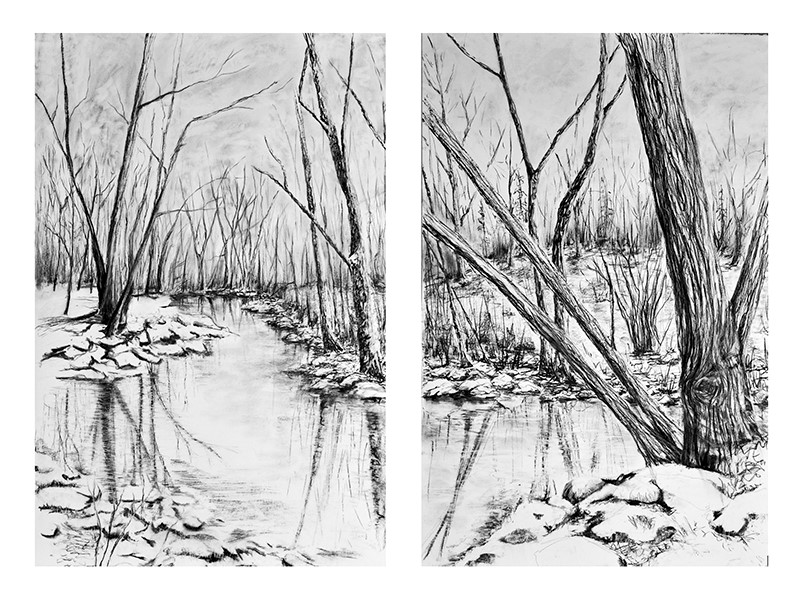
Due to the historic nature of the Bunkhouse, Andrew-Stuckel noted that she and Roelens cannot work in quite the same manner to which they are accustomed. Since the Bunkhouse’s walls are plaster, they cannot use thumb tacks, pins or nails, for example.
“We actually brought in some drywall to lean against the wall so that we can pin our large papers onto it. We also use plastic drop cloths and tarps to protect the floor. That said, it feels good to be a part of this history and to have the opportunity to work here,” Andrew-Stuckel said. “The Bunkhouse is right next to the Meditation Garden and the Rose Garden, so it is a very beautiful area.”
Roelens encourages other artists to apply to participate in The Bunkhouse Project when residencies become available. She noted it is “an ideal location, and having studio space in this facility generously provided by the City offers a unique experience and promotes the arts community in Saskatoon.”
“Walking through the door of the Bunkhouse with its restored wooden floors, steep narrow staircase and utilitarian layout really feels like a step back in history,” she said. “Fixtures such as the doors, sash windows and details like worn doorknobs, some retro light fittings and the presence of an attic give a sense that this building has served a purpose over the decades. Old photographs found in various publications and archives show it has been thoughtfully restored and retains its historical integrity.”


